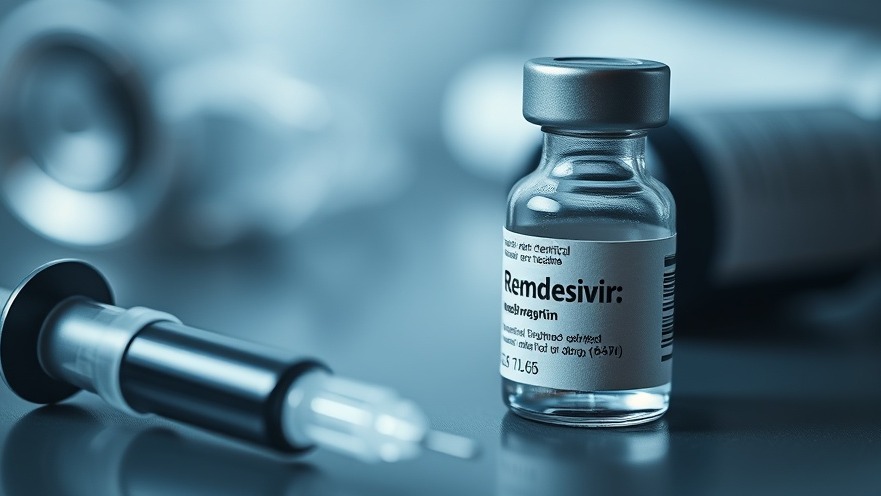
Recent Findings on COVID-19 Treatments: What You Need to Know
As the world adapts to life alongside COVID-19, comfort can be found in the advancements in treatment options for mild-to-moderate cases. A compelling meta-analysis recently published in The BMJ evaluated 40 different treatments across 187 randomized trials, including data from over 166,000 participants. This extensive study confirmed what many healthcare professionals have suspected: while some treatments may be effective, most COVID-19 drugs fall short of significantly improving mortality rates.
Pioneering Treatments: Breaking Down Efficacy
The research revealed that only two antiviral treatments, nirmatrelvir-ritonavir (commonly known as Paxlovid) and remdesivir, demonstrated a moderate ability to reduce hospitalizations. Specifically, Paxlovid was found to prevent approximately 25 hospitalizations per 1,000 patients treated, while remdesivir had a slightly lesser impact, preventing 21 hospitalizations per 1,000 patients. While these findings bring hope, it’s crucial to note that none of the treatments reduced mortality rates, which remains a significant concern.
Understanding COVID-19: Phases of Disease Progression
COVID-19 is characterized by two distinct phases in its progression: an early viral replication phase and a later inflammatory phase, the latter often leading to severe health complications. This understanding emphasizes the need for tailored treatment. The recent meta-analysis concentrated on those suffering from mild-to-moderate COVID-19—an area where therapeutic evidence has been thin despite an overwhelming number of clinical trials. Understanding this progression is critical for recognizing why certain treatments work better in specific phases.
Hospitalization Rates and Innovations: What’s on the Horizon?
It’s essential for the community—especially suburban professionals and families—to stay informed about how treatments can impact hospitalization rates. In addition to Paxlovid and remdesivir, other drugs like molnupiravir and certain corticosteroids showed promise in potentially lowering hospitalization rates, but so far, evidence remains of low certainty. As researchers continue to seek effective options, the results of this meta-analysis will likely aid in reshaping future World Health Organization (WHO) treatment recommendations.
Embracing a Health-Conscious Mindset
For suburban professionals aged 25-60, maintaining awareness of health trends is key. COVID-19 has reinforced the importance of adopting a proactive approach to health and wellness. Engagement in health education empowers individuals to make well-informed decisions regarding their treatment and prevention strategies. Optimizing lifestyle habits—such as good nutrition, regular exercise, and mental wellness—is essential, regardless of the uncertainties surrounding COVID-19 treatments.
Looking Ahead: What Can We Learn?
The persistence of COVID-19 underscores the need for continued vigilance and preparedness. Although therapies like Paxlovid and remdesivir show promise, their limitations in reducing mortality stress the importance of a holistic approach to health. Engaging with ongoing medical research and trends can not only enhance individual and community well-being but also cultivate an informed citizenry.
In summary, as we navigate this ever-evolving landscape of health, let us embrace the small victories found in effective treatments while remaining grounded in robust health practices. In this journey, remember to stay proactive and connected to health advancements that might one day change the course of recovery.
 Add Row
Add Row  Add
Add 




Write A Comment